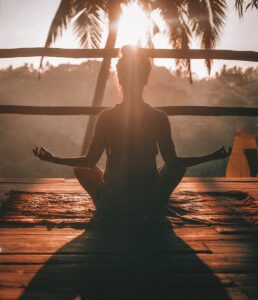What is Breathing Techniques?
Breathing techniques refer to various methods and practices that focus on the control and regulation of breath. These techniques are often utilized in holistic health to enhance physical, mental, and emotional well-being. By consciously altering the way we breathe, individuals can experience profound changes in their overall health, stress levels, and emotional states.
The Importance of Breath in Holistic Health
In holistic health, breath is considered a vital life force. It is believed that proper breathing can influence the flow of energy within the body, promoting balance and harmony. Techniques such as deep breathing, diaphragmatic breathing, and pranayama are often employed to help individuals connect with their inner selves and achieve a state of relaxation and mindfulness.
Types of Breathing Techniques
There are numerous breathing techniques available, each with its unique benefits. Some popular methods include abdominal breathing, box breathing, and alternate nostril breathing. Each technique serves different purposes, such as reducing anxiety, improving focus, or enhancing lung capacity. Understanding the various types of breathing techniques can help individuals choose the most suitable practice for their needs.
How Breathing Techniques Affect the Body
Breathing techniques can have a significant impact on the body’s physiological responses. When practiced regularly, these techniques can lower heart rate, reduce blood pressure, and decrease levels of cortisol, the stress hormone. This physiological response can lead to improved overall health and a greater sense of well-being, making breathing techniques an essential component of holistic health practices.
Breathing Techniques for Stress Relief
Many individuals turn to breathing techniques as a means of managing stress. Techniques such as 4-7-8 breathing and deep belly breathing can activate the body’s relaxation response, helping to alleviate feelings of anxiety and tension. By incorporating these practices into daily routines, individuals can cultivate a greater sense of calm and resilience in the face of stressors.
Breathing Techniques in Meditation
Breathing techniques play a crucial role in meditation practices. They help practitioners focus their minds, enhance concentration, and deepen their meditative state. Techniques such as mindful breathing and guided breath awareness are commonly used to anchor the mind and facilitate a deeper connection to the present moment, making meditation more effective and fulfilling.
Breathing Techniques for Improved Sleep
Incorporating breathing techniques into a nighttime routine can significantly improve sleep quality. Techniques like progressive muscle relaxation combined with deep breathing can help calm the mind and prepare the body for restful sleep. By focusing on the breath, individuals can reduce racing thoughts and promote a sense of tranquility, leading to a more restorative sleep experience.
Breathing Techniques for Physical Performance
Athletes and fitness enthusiasts often utilize breathing techniques to enhance physical performance. Proper breath control can improve endurance, increase oxygen intake, and optimize energy levels during workouts. Techniques such as rhythmic breathing and pursed lip breathing are particularly beneficial for athletes looking to maximize their physical capabilities and recovery.
Learning and Practicing Breathing Techniques
Learning breathing techniques can be done through various resources, including workshops, online courses, and guided sessions with holistic health practitioners. It is essential for individuals to practice these techniques regularly to experience their full benefits. Consistency and mindfulness in practice can lead to lasting changes in health and well-being.
Conclusion on Breathing Techniques
Breathing techniques are a powerful tool in holistic health, offering numerous benefits for physical, mental, and emotional well-being. By understanding and practicing these techniques, individuals can enhance their quality of life and cultivate a deeper connection to themselves and their surroundings.




